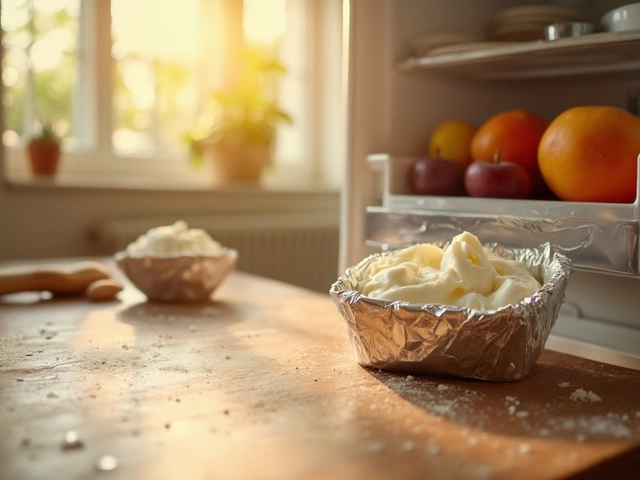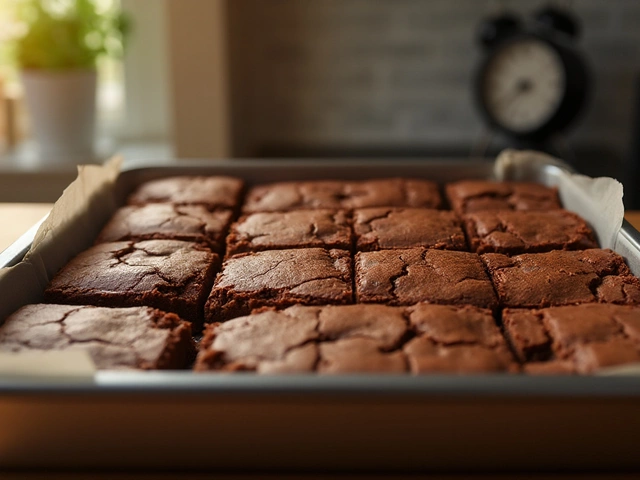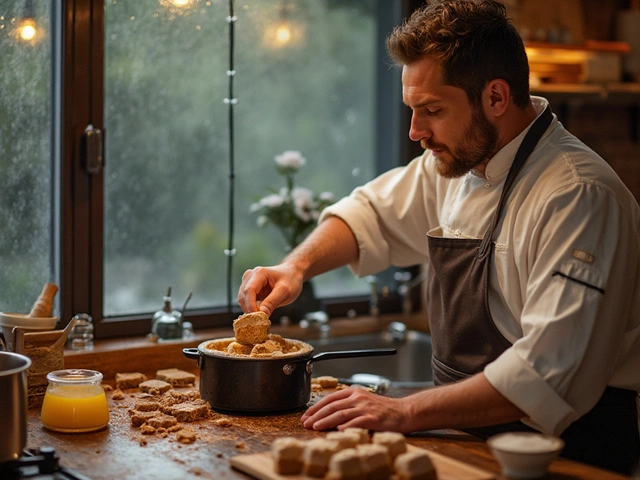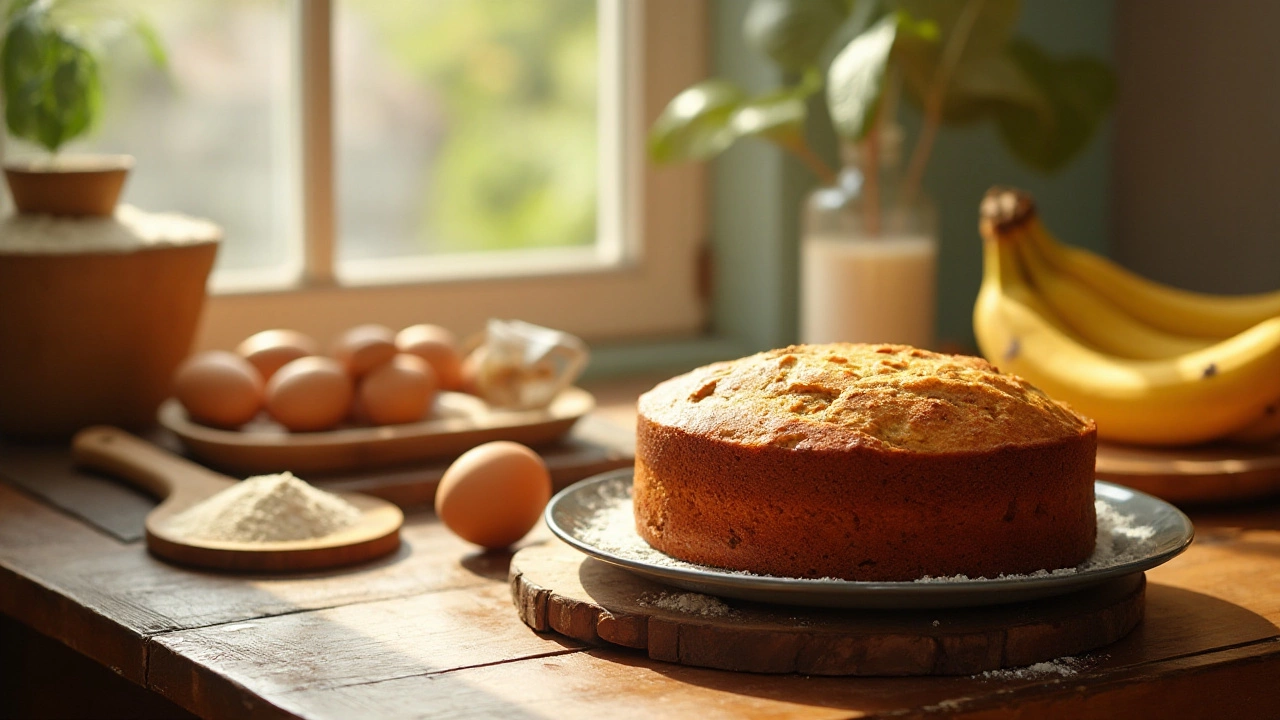
When it comes to gluten-free baking, the humble banana is often a star player. Many people wonder if this popular fruit is a safe choice for those with gluten sensitivities. If you're delving into the world of gluten-free cakes, understanding the role of bananas can enhance your culinary creations.
While the answer to whether a banana is gluten-free is a simple yes, its function in gluten-free baking adds layers of complexity and creativity. Bananas not only fit effortlessly into a gluten-free diet but also bring their own set of nutritional perks and flavor profiles. Discover the secrets of using bananas effectively in your gluten-free desserts for outcomes that are nothing short of scrumptious.
- Understanding Gluten-Free Basics
- Bananas in the Gluten-Free Diet
- Nutritional Benefits of Bananas
- Tips for Baking Gluten-Free Cakes with Bananas
Understanding Gluten-Free Basics
In recent years, gluten-free diets have surged in popularity, largely due to increased awareness of gluten-related disorders and personal health choices. To comprehend why gluten-free living is more than just a trend, it’s essential to grasp what gluten is and how it affects certain individuals. Gluten is a protein composite found in several grains including wheat, barley, and rye, contributing to the elasticity of dough and the chewy texture of baked goods. While many relish the taste and texture it provides, there is a segment of the population that cannot tolerate it due to Celiac disease, gluten sensitivity, or wheat allergy. It's a dietary commitment that demands diligence and accuracy, especially when baking.
For those with Celiac disease, the ingestion of gluten triggers an autoimmune response that damages the small intestine. In contrast, non-celiac gluten sensitivity involves adverse reactions without the autoimmune aspect. To ensure a safe diet, awareness of gluten's presence in foods is vital. Reading labels meticulously becomes second nature, as gluten can sneak into surprising products, like condiments and processed meats. This dietary vigilance extends into baking, where choosing the right ingredients—and understanding their properties—can spell the difference between a successful dessert and one that just doesn’t rise to the occasion. A gluten-free cake, for example, can still offer rich texture and taste when created with careful substitution.
Let’s not forget that opting for gluten-free living can also be a lifestyle choice, embraced even by those not medically required to do so. People report feeling less bloated, more energetic, and generally healthier when avoiding gluten-laden foods. Whether driven by necessity or choice, those embarking on a gluten-free journey find it beneficial to educate themselves about not only what foods to avoid but also what alternatives exist and how to incorporate them into delightful dishes. Bananas, a naturally gluten-free fruit, play a pivotal role here, especially in gluten-free cakes where their moisture and flavor shine through.
Expert bakers and novices alike should embrace the art of substitution. As Andrea Nguyen, a noted culinary author, once highlighted in her work:
"Substitution is not about finding the exact replacement, but crafting and tweaking ingredients until you achieve a balance of flavor and texture that honors the original while creating something new and unique."This approach can lead to discoveries that enrich the culinary experience without gluten constraints. Experimentation is key, as the absence of gluten can sometimes mean reworking proportions and methods to achieve a satisfactory end texture and cohesiveness in baked goods.
Understanding gluten-free basics is not simply a dietary measure but also an invitation to explore the art and science of baking from a fresh perspective. It involves a careful dance of selecting ingredients that work in harmony without gluten’s binding magic. Armed with the right knowledge and a dash of creativity, you can embark on creating desserts that are just as delectable and satisfying, ensuring everyone at your table, gluten-sensitive or not, can indulge without worry. In this delicious realm, bananas represent much more than a fruit—they’re a symbol of how naturally delightful gluten-free baking can be.
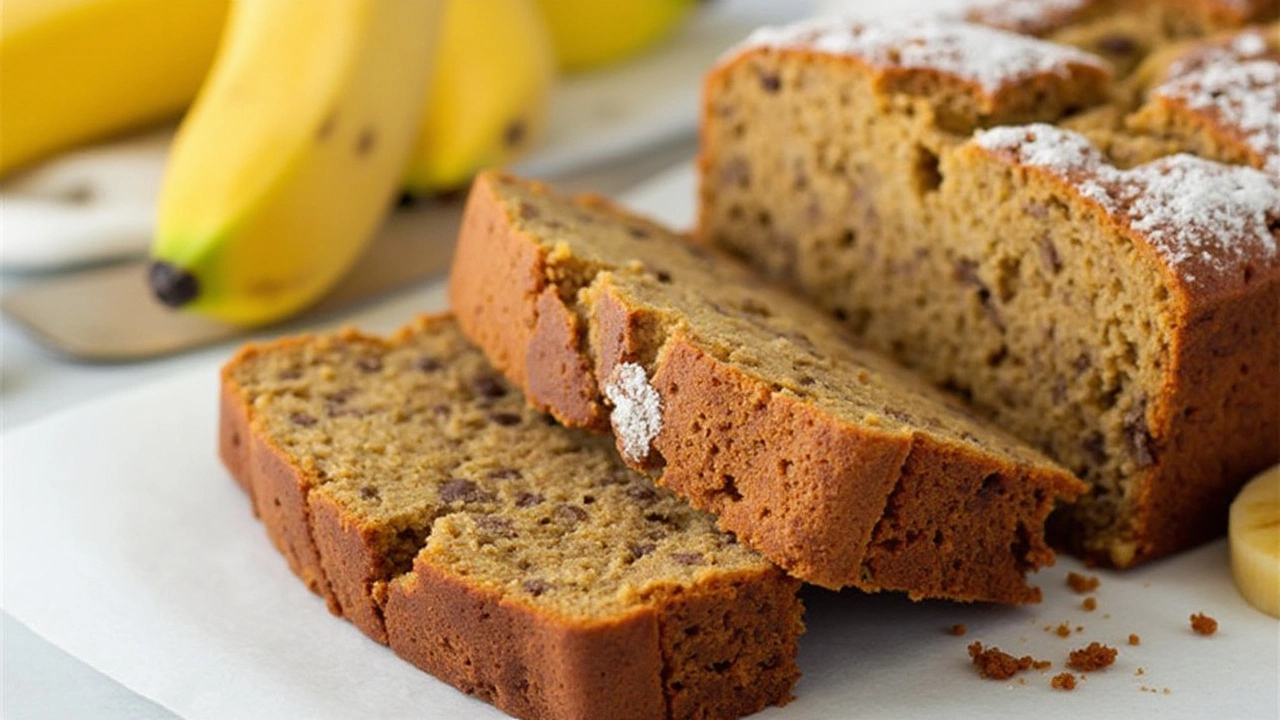
Bananas in the Gluten-Free Diet
For individuals pursuing a gluten-free lifestyle, bananas are a reassuring fruit choice because they are naturally free from gluten. This component of the protein found in wheat, barley, and rye can lead to adverse reactions in people with celiac disease or gluten sensitivity. However, when it comes to bananas, there’s nothing to worry about; they are gluten-free in their most unadulterated, fresh form. This makes them an excellent option for snacks and meals without the burden of cross-contamination. Imagine biting into a perfectly ripe banana in its sunlit yellow peel, a testament to its purity and ease of use in any meal plan.
Bananas are versatile in the scope of baking and cooking, particularly in the context of gluten-free cakes and desserts. They serve not only as a binder in recipes that omit traditional flour and eggs but also as a natural sweetener, reducing the need for additional sugars. The creamy texture of mashed bananas can replace fats like butter, adding moisture and richness to baked goods without compromising on health. For instance, in banana bread, the fruit works like magic, holding the batter together and providing that signature sweet aroma and flavor.
Beyond their baking prowess, bananas boast a host of nutritional benefits that make them an attractive addition to any diet. They're packed with essential nutrients like potassium, Vitamin C, and dietary fiber, which contribute to heart health, immune support, and digestive wellness. Potassium, in particular, helps to balance fluids in the body, a necessity given that gluten-free diets can sometimes lack in certain nutrients. Are you looking for a health-conscious post-workout snack? A banana easily fits the bill, replenishing energy and providing nutrients without unwanted gluten.
Some may wonder about the environmental impact of bananas since they often come from overseas. Interestingly, bananas have a relatively low carbon footprint compared to other imported fruits, thanks to their durability and ease of transport. Plus, the way they grow in bunches means they need fewer resources compared to fruits that compete heavily for soil space and nutrients. This fact makes bananas a rather thoughtful choice for those conscientious about both health and environmental sustainability.
According to the Celiac Disease Foundation, "A naturally gluten-free diet can include many minimally processed staples, such as fruits and vegetables, meat and fish, potatoes, rice, and, of course, fresh bananas." This reassuring piece of advice highlights the emphasis on whole, unprocessed foods in managing gluten-intolerance effectively.
With the growing interest in gluten-free foods, bananas continue to captivate culinary enthusiasts with their simplicity and functionality. They are a superb option for anyone embracing a healthy, flavorful, and gluten-free lifestyle. Whether you’re stirring them into pancakes, blending them into smoothies, or baking them into banana desserts, this humble fruit is truly a staple worth celebrating.
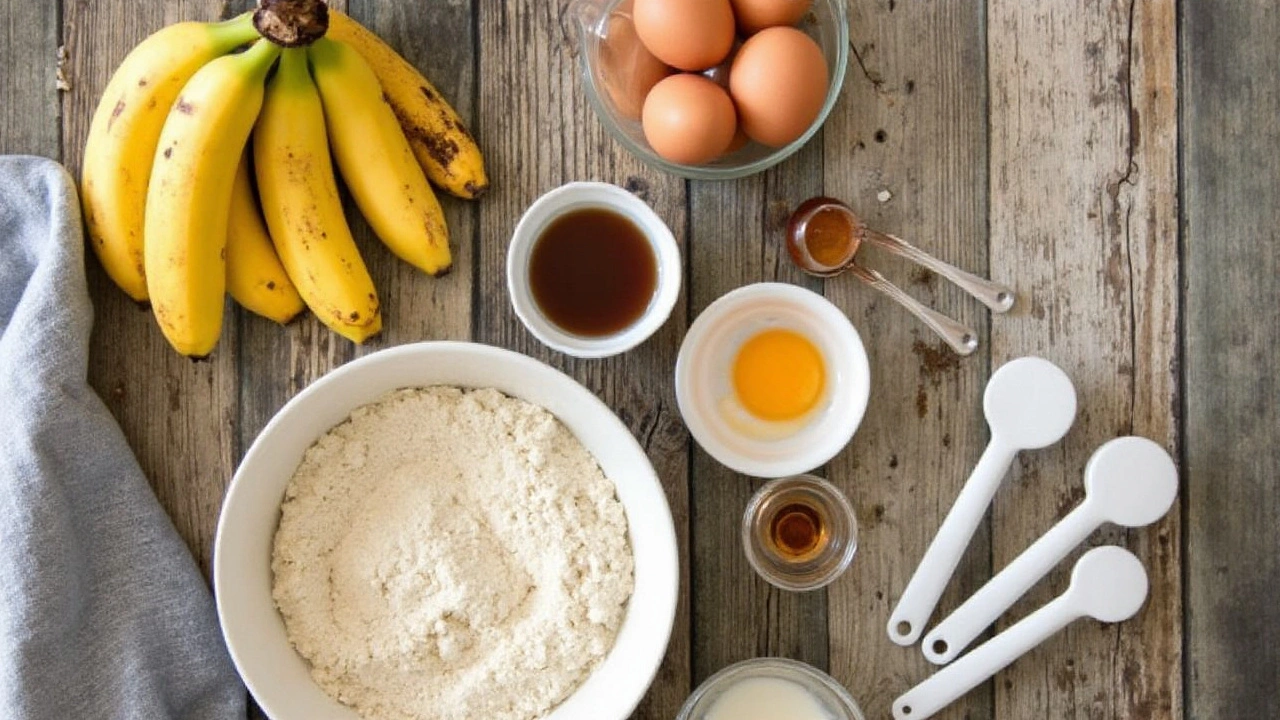
Nutritional Benefits of Bananas
Bananas are beneficial for both their taste and their nutritional profile, making them a choice ingredient in gluten-free diets. One of the key components of bananas is potassium, which plays a crucial role in heart function and blood pressure management. For individuals focusing on cardiovascular health, incorporating bananas into their diet can be particularly advantageous. Not only do bananas provide essential nutrients, but they are also easy to digest, making them suitable for those with sensitive stomachs. In addition to potassium, bananas are a good source of vitamins C and B6, which contribute to a range of bodily functions including, but not limited to, immune defense and brain health. A diet rich in bananas can also aid in digestion due to the presence of dietary fiber which supports gastrointestinal health. A major access point for this fiber is in the bananas' content of pectin, a type of soluble fiber that also helps regulate blood sugar levels. This makes bananas not just a sweet treat, but a functional part of a gluten-free diet regime, offering more than just a natural sweetness to baked goods. Rich in antioxidants, bananas help fight free radicals in the body, potentially lowering the risk of certain diseases over time. Let's not forget their role in keeping energy levels steady, thanks to the complex carbohydrates they offer, providing prolonged and evenly distributed energy, quite distinct from the sharp peak given by processed sugars.
The importance of bananas extends into their versatile nature. Often dubbed as nature's energy bar, they are convenient to consume anywhere and anytime. In the realm of gluten-free baking, especially, this adaptability helps bakers use them in various forms—pureed, mashed, or sliced. Additionally, incorporating bananas into gluten-free cakes and desserts introduces a lovely natural sweetness, helping reduce the need for added sugars. This, in turn, aligns with healthier dietary choices. According to the United States Department of Agriculture (USDA), a single medium banana contains around 110 calories, 30 grams of carbohydrates, and 1 gram of protein. This makes bananas an energy-dense, nutrient-packed ingredient that can enhance the nutritional quality of your dishes without overwhelming calorie limits. Moreover, bananas support a reduced risk of depression, thanks to tryptophan—a mood-regulating amino acid that, when converted into serotonin, contributes to feelings of happiness and well-being. For those considering weight management or maintaining a healthy diet, bananas offer satiety with relative few calories, making them perfect for snacks or as a filler ingredient in gluten-free recipes. They provide both taste and nutrition in a way that is accessible to all.

Tips for Baking Gluten-Free Cakes with Bananas
Incorporating bananas into your gluten-free cake recipes isn't just a genius hack for moisture, it also deepens the flavor and adds natural sweetness that makes each bite heavenly. When you're working without gluten, the challenge often lies in replicating the structure that gluten provides. Bananas step up as a natural binder, helping to create a tender crumb that doesn't feel lacking. When selecting bananas for baking, the ripeness is key. Opt for those with speckled skins, as they offer the right amount of moisture and sweetness that highlights the cake’s flavor. Using under or overripe bananas may change the texture and flavor, deviating from the desired outcome.
Getting the consistency right in a gluten-free cake can take a gentle hand, and bananas are forgiving allies in this mission. They contribute creaminess and heft, which can also minimize the need for excessive fats or oils in your recipe. When mashing the bananas, ensure they are smooth, yet not too runny. A thorough mash will integrate better into the batter, leaving less room for chunks to hinder the cake's final texture. Adding bananas in incremental amounts during mixing is beneficial. This method helps achieve the right balance without oversaturating the batter, which could make the cake too dense. It’s as much about texture as it is about flavor with these golden fruits working their magic.
"Bananas naturally fit into the gluten-free world due to their unique carbohydrate structure and impressive moisture levels," says Mary Schaeffer, author of ‘The Gluten-Free Kitchen.’
When venturing into gluten-free banana cake territory, it is equally important to pay attention to the interplay of flavors. Considering the banana’s profile, it pairs wonderfully with gluten-free flours like almond or rice flour, which enhance their sweet notes without overpowering them. The use of spices such as cinnamon and nutmeg can further elevate the banana’s aroma. Precision in your measurements can’t be overstated—gluten-free baking requires accuracy to ensure proper rise and texture. Always measure your flour with the spoon-and-level method to avoid compacting and ultimately, a dry cake. Implementing a touch of xanthan gum can be a game-changer, as it mimics gluten’s elasticity and contributes to a better structure in the final product.
Enhancing Banana Flavor
The natural sweetness of bananas can be highlighted or complemented by various ingredients depending on personal preferences. Consider incorporating vanilla extract or a hint of citrus zest to play with flavors. For those who want to increase the nutritional value, you can integrate crushed nuts or chia seeds into your batter; these additions also bring textural contrast that is quite delightful. Banana pairs exceptionally with dark chocolate or cocoa, which balances its sweetness and adds depth. This leads not only to a delicious treat but a sophisticated flavor profile that's perfect for special occasions. Remember not to rush the baking process; allow the cake to cool adequately before serving for the flavors to fully meld together.
| Ingredient | Gluten-Free Substitute |
|---|---|
| Flour | Almond, Rice, or Oat Flour |
| Sweetener | Honey or Maple Syrup |
| Binder | Xanthan Gum or Psyllium Husk |


